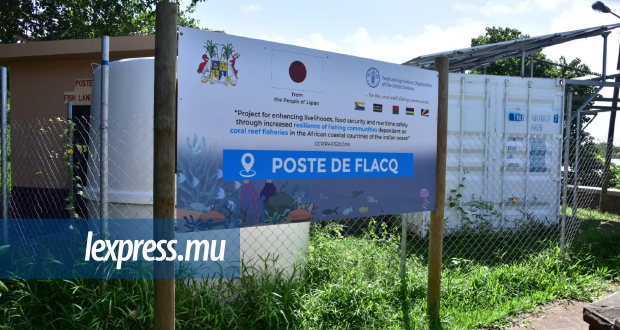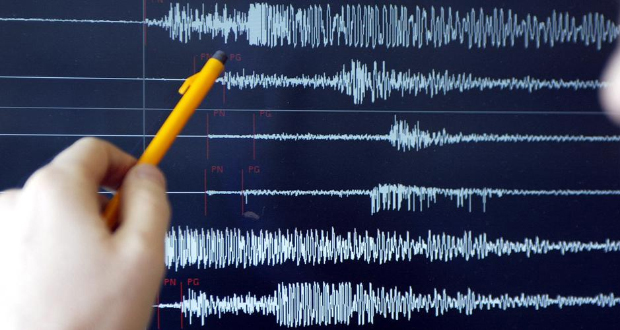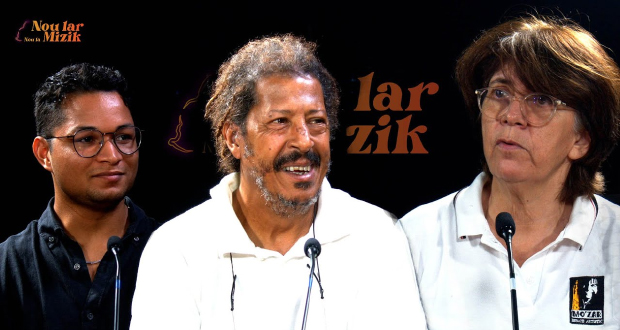Publicité
Origins & History of the Chagossians
Par
Partager cet article
Origins & History of the Chagossians

Over the past three decades, the Mauritian nation has closely followed the plight and the valiant struggle of the Chagossians in their attempt to return to their archipelago from where they were uprooted by British colonial authorities. After all, between 1965 and 1973, hundreds of Chagossians or ?ilois? were removed by force and resettled in Mauritius and the Seychelles by the British government with the complicity of the American government. In the process, the social, economic, and territorial umbilical chord which linked Mauritius and the Chagos was cut.
In fact, ?the annexations? of the Chagos Archipelago by the British government was the greatest territorial lost for Mauritius since the Seychelles becam a separate crown colony in 1903. It is important to note that for more than two centuries, the French and the British had recognised that the Chagos Archipelago (which consist of several coral atolls an small clusters of islands (such as Diego Garcia, Peros Banhos, Three Brothers or Trois Frères, and Salomon Islands) as having been an integral part of the colony of Mauritius.
Sydney Selvon, a Mauritian historian, explains:?Legal and historical documents from French to British rule in Mauritius show that the Chagos Archipelago was part and parcel of the Mauritian historical, cultural, and territorial patrimony.?
The settlement of the Chagos
It was only during the mid-1780s that the permanent settlement of the Chagos Archipelago began under French rule. In February 1783, Sieur Pierre Marie Le Normand, an influential sugar and coconut plantation owner from the Black River district, petitioned Governor Vicomte de Souillac for a major land concession on Diego Garcia in order to establish a large coconut plantation. During the same month, the French governor gave this important Mauritian landowner ?a favourable reply?.
In 1784, more than a year after the land concession was granted, Le Normand set out with two ships from Mauritius to Diego Garcia with 79 Mozambican and Malagasy slaves as well as a few free coloureds who were skilled workers. The ships also contained materials for the construction of a large coconut plantation. Between 1786 and 1790, Le Normand?s plantation was prosperous and a large quantity of copra was sent back annually to Mauritius where a limited amount coconut oil was produced for local consumption. The significance of this plantation cannot be underestimated because it marked the genesis of the permanent settlement as well as of the emergence of an important industry in Diego Garcia which was based exclusively on slave labour.
By the 1790s and first decade of the 1800s, three new coconut plantations and a fishing settlement, also relying on unfree labour, emerged on that coral atoll thanks largely to Mauritian entrepreneurs such as Lapotaire, Didier, Danquet, and the brothers Cayeux. By 1808, there were 100 Mozambican and Malagasy slaves working in Diego Garcia under Lapotaire alone. In 1813, there was a similar number of enslaved labourers in Peros Banhos, shortly after Governor Farquhar granted a jouissance in 1813 to create a coconut plantation there. Other coconut plantations were similarly established under other owners at Six Isles in 1808 and at Trois Frères, Île d?Aigles, and Salomon Islands in 1813.
It is evident that between the mid-1780s and mid-1830s, like in other island colonies of the period, it was the Mozambican and Malagasy slaves who built the archipelago?s infrastructure, produced its wealth, and formed the overwhelming majority of its inhabitants, who were to become the ancestors of today?s Chagossians. Furthermore, it was slave labour which was used to exploit the natural resources of the Chagos which apart from copra included fish, guano, timber, and tortoise. By the first decade of the 1800s, coconut oil was also being manufactured at Diego Garcia and exported to Mauritius.
In 1826, Baron d?Unienville, the Chief Archivist of Mauritius, reported on some of the bountiful conditions which were found throughout the Chagos when he observed:
?L?île produit beaucoup de cocos, elle ne manque pas non plus de bois, tels que [t]atamaka, bois blanc bon pour pirogues, bois à brûler; elle abonde en poisons, tortues, oiseaux de mer, poules sauvages.?
Between the late 1780s and 1828, conditions in Diego Garcia were so bountiful that the island temporarily became a destination for dozens of lepers who were sent by force from Mauritius by the French and then the British authorities to feast on abundant tortoise meat which was thought to be a cure for leprosy!
The Chagos under British Rule
By the first decade of the nineteenth century, French colonial power in the Indian Ocean crumbled with the capture of Mauritius and some of the other islands in the south west Indian Ocean. The Chagos, like the Seychelles at this point, was considered to be one of the dependencies of Mauritius and was formally ceded to Great Britain through the Treaty of Paris in 1814. In general, life in the Chagos Archipelago changed very little under British rule and slavery remained the defining feature of the coconut plantations and settlements, as it would until the abolition of slavery in Mauritius and its dependencies in 1835.
A letter from 1828 from the Mauritius Archives mentions the names and origins of some of the slaves of the Chagos, who eventually became its permanent residents, such as Pierre Louis (Creole of Mauritius), Prosper Jean (Malagasy), Marie Jeannie (Mozambican), Michel Levillain (Mozambican) and his wife, Prudence Levillain (Malagasy), and Theophile Le Léger (Creole of Mauritius). These names, while they were common in the Chagos Archipelago during the 1820s and 1830s, to a certain extent resemble some of the names of today?s Chagossians who reside in Mauritius and the Seychelles. The following tables provide a breakdown of the white, free coloured, slave and leper population in the Chagos in 1826.
Thus, in 1826, barely a decade before the abolition of slavery in Mauritius and its dependencies, there were 375 slaves, 9 whites, 22 free coloureds, and 42 lepers. In all, there were 448 inhabitants in the Chagos Archipelago with Diego Garcia containing more than half of the residents. For the Chagossian slaves, life was dominated by the daily orders of the administrateurs which was enforced by their commandeurs.
The work of the slaves was long and hard, as the owners reported, ?from sunrise to sunset for six days a week.? Outside their work days and working hours, some of the Chagossian slaves were able to save some money and have a ?petite plantation,? which allowed them to raise animals and cultivate produce. They seem also to have exercised some control over their own social relations through the guidance of older men and women as well as an informal council of elders, a system that may have had its roots in East Africa and Madagascar.
After emancipation in February 1835, the general nature of labour relations changed little, even if the quantity and demands of work lessened over time in favor of the labourers during the late 1830s and 1840s. In fact, in 1949, a visiting representative of the Mauritian Labour Office commented that generally the ?patriarchal? labour relations between the managers and labourers in the Chagos as ?dating back to what I imagine would be the slave days, by this I do not imply any oppression but rather a system of benevolent rule with privileges and no rights?.
The biggest change with the end of slavery came when plantation owners during the 1840s and 1850s began importing indentured labourers from India to work. These new workers gradually integrated themselves into Chagossian society and many among these newly arrived labourers as well as the ilois converted to Catholicism. Many of the Indian labourers intermarried with the inhabitants thus, becoming the ancestors to some of today?s Chagossians.
A Distinct Creole Society
By the middle of the 19th century, Diego Garcia and Peros Banhos contained very ?prosperous estates.? In the 1860s, wages for labourers were the equivalent of 10 shillings a month, a dollop of rum, and a ?twist of tobacco if times were good.? Rations, which were treated as part of wages, totaled between 11 and 14 pounds a week of what was usually rice.
In 1877, Governor Phayre and the Council of Government enacted a law which established strict regulations for the working and living conditions of the labourers in the ?Lesser Dependencies of Mauritius? and it was also aimed at providing them with basic services. Work on Sundays ?was strictly limited? and the manager of each plantation was required to provide housing, adequate provisions in a company store, a hospital, and a prison for short-term imprisonments.
Housing was free and in Diego Garcia the manager at Pointe de L?Este ?introduced the system of allowing labourers to build their own houses, if they so opted, the management providing all the materials.? The system proved to be a success because it led to the creation of ?superior dwellings? and a sense of proprietorship" and it continued in the Chagos Archipelago during most of the twentieth century.
In 1880, a visiting Stipendiary Magistrate reported that, ?as a general rule the men enjoy good health, and seem contented and happy, and work cheerfully.? The Magistrate found that the Chagossians lived in ?good huts? made of a wooden frame and coconut palm leaves. Fish was ?abundant on nearly all the Islands, and on most of them also pumpkins, bananas, and a fruit called the ?papaye,? grow pretty freely.? By 1880, the population in the Chagos had risen to approximately 760.
During the first century of the settlement of the Chagos, the islands were relatively isolated from the rest of the Indian Ocean. Although connections with Mauritius and the Seychelles were strong, regular ships from Mauritius came only two or three times a year to bring provisions, to transport residents and immigrants to and from the islands, and to load copra and coconut oil for sale in Mauritius.
In 1882, the islands were nearly transformed with the establishment of two coaling stations on Diego Garcia for steamer lines crossing the northern and south western Indian Ocean. Between 1882 and 1888, new labourers and artisans arrived from Somalia, England, Greece, and Italy, and steamships from Europe and Australia called on a regular basis. However, by the late 1880s, with the closing of the coaling stations due to financial problems,the Chagos returned to its geographic isolation.
Furthermore, it was precisely because of this isolation that a distinct and insular island society had emerged in the Chagos by the turn of the 20th century. A distinct Chagos Creole, related to the Mauritian Creole and "Seyselwa", emerged among the islanders. Diego Garcia remained the most important island in the archipelago and the most important of the "Oil Islands of Mauritius". By 1911, it had a population of 517 people, along with six villages, several other outposts, and two hospitals, not to mention 81 asses, 3 horses, 3 bullocks, and 1 mule. During the 19th century and most of the 20th century, the Chagossians, specially those of Diego Garcia, developed an identity of their own in their little island-world in a remote corner of the Indian Ocean.
By David Vine
& Satyendra PEERTHUM
Publicité
Les plus récents






